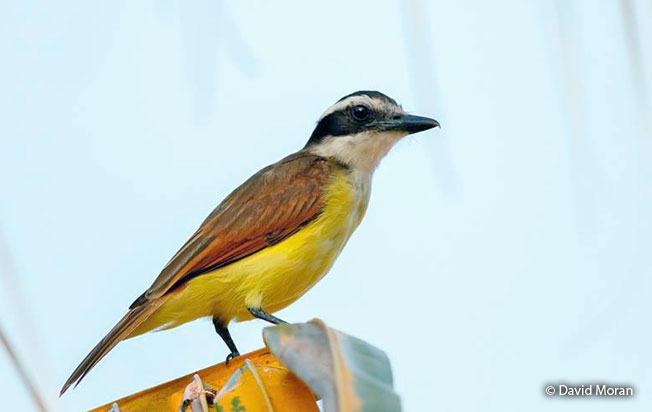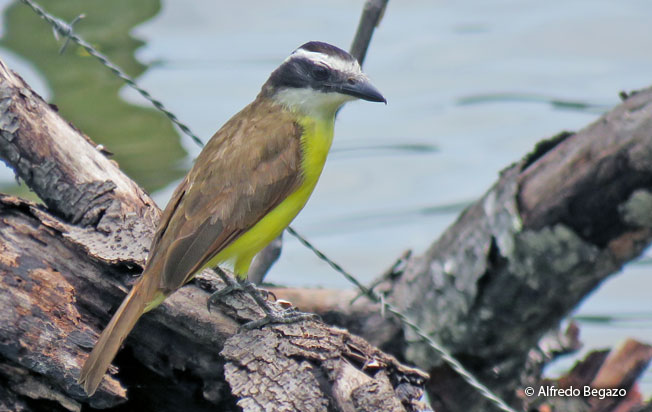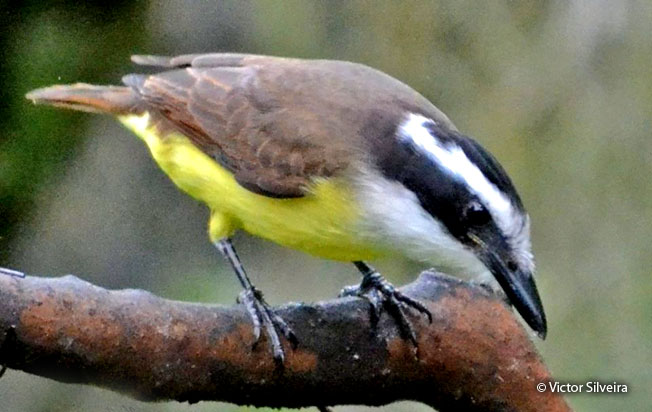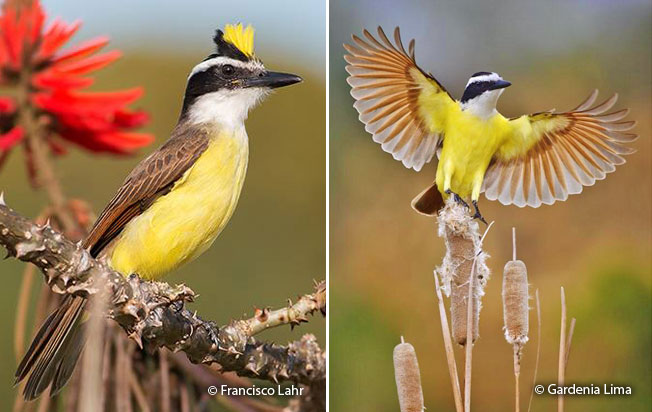Order: Passeriformes | Family: Tyrannidae | IUCN Status: Least Concern

Age: Adult | Sex: Unknown | Loc. Amazonian Brazil

Age: Adult | Sex: Unknown | Loc. Lago Lindo, San Martin

Age: Adult | Sex: Unknown | Loc. Amazonian Brazil

Age: Adult | Sex: Unknown | Loc. Amazonian Brazil
Status: The Great kiskadee is common and widespread in Amazonia where it is known to range up to 1200 m along the foothill of the Andes. It also occurs in Co, Ec, Br, and Bo.
Name in Spanish: Bienteveo Grande.
Sub-species: Great Kiskadee (Pitangus sulphuratus sulphuratus), (Linnaeus), 1766. the Guianas, N Brazil (S to Amazon, E to Amapá and Marajó I), and E of Andes from SE Colombia and E Ecuador S to SE Peru.
(Pitangus sulphuratus maximiliani), (Cabanis and Heine), 1859. E & S Brazil (Maranhão and Piauí S to Mato Grosso, Goiás and Santa Catarina), N Bolivia (Beni) and Paraguay.
Meaning of Name: Pitangus: Tupí name Pitanguá guacú for a large flycatcher, perhaps the Great Kiskadee. sulphuratus: L. sulphur, sulphuris= sulphur, sulphuratus, sulphurated.
 Voice
VoiceReferences:
-
- Species range based on: Schulenberg, T. S., D. F. Stotz, and L. Rico. 2006. Distribution maps of the birds of Peru, version 1.0. Environment, Culture & Conservation (ECCo). The Field Museum. http://fm2.fieldmuseum.org/uw_test/birdsofperu on 03/01/2017.